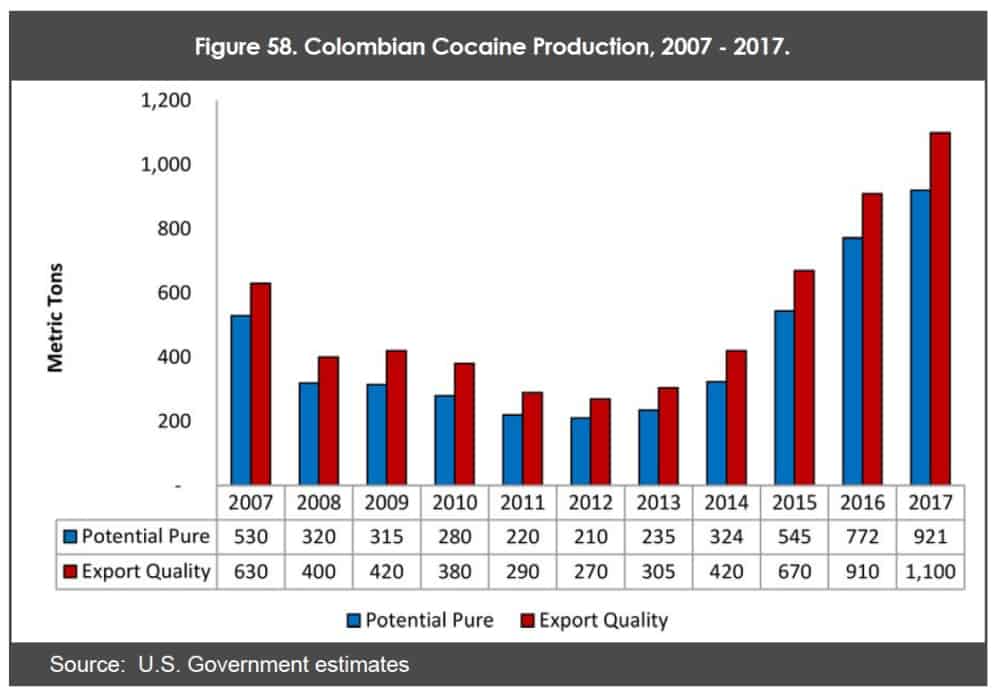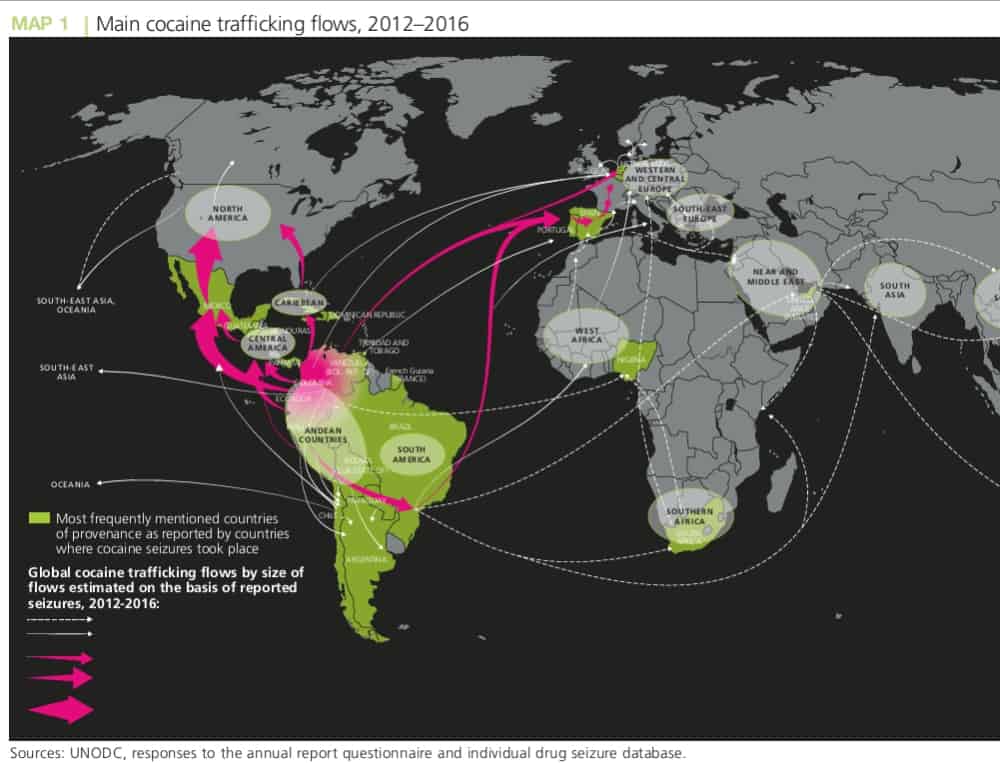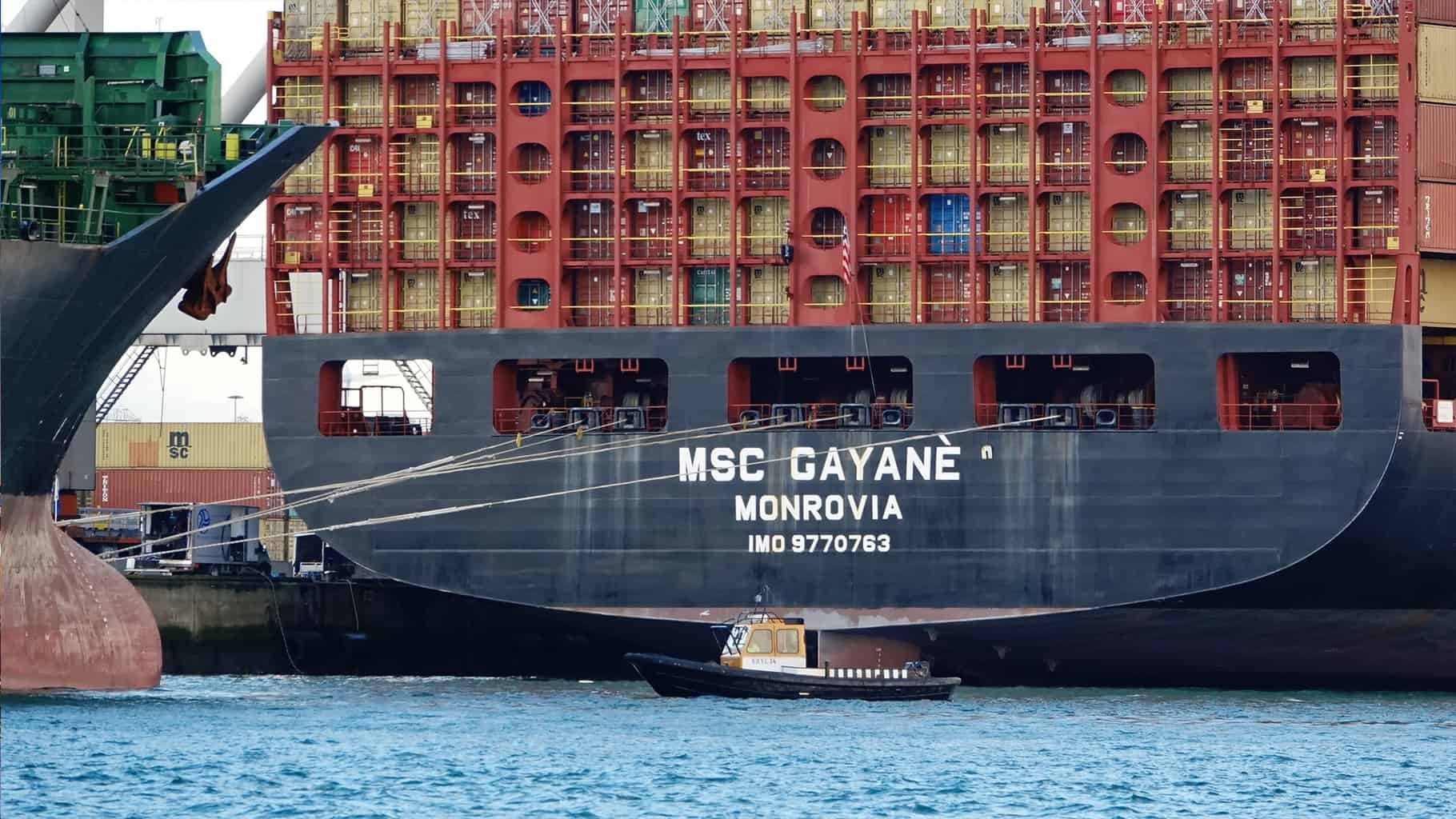The discovery of 15,582 bricks of cocaine aboard the container ship MSC Gayane at the Port of Philadelphia set a new record. Weighing in at 35,000 pounds, it was the largest bust in the history of U.S. Customs and Border Protection.
This massive interdiction – coming on the heels of the seizure of over 1,185 pounds of cocaine on the container ship MSC Desiree in Philadelphia in March – led to the temporary suspension of the Mediterranean Shipping Company’s certificate under the voluntary Customs-Trade Partnership Against Terrorism program, which provides participants with quicker border clearances.
For the second largest container shipping company in the world to face consequences – even temporary consequences – makes this a bigger story for the transportation sector than it otherwise would be. But it could actually be an even bigger story than that. South American cocaine production is on the rise, and all container lines, as well as operators of other ship types and in other transport modes, could face increased risks ahead.
The MSC Gayane bust
The MSC Gayane, which has capacity to carry 11,600 twenty-foot-equivalent units of containers, serves the route between the west coast of South America and northern Europe. It calls in Callao, Peru and Buenaventura, Colombia on the Pacific coast of South America; traverses the larger Neopanamax locks of the Panama Canal; stops in Cristobal, Panama; the transshipment hub in Freeport, Bahamas; then Philadelphia; then across the Atlantic to Rotterdam, the Netherlands.
Six crew members have reportedly been arrested to date. The docket on the case has been sealed but a copy of the initial indictment has been seen by FreightWaves. The special agent claims to have been told by at least two crew members that the ship was met by fast boats when it was between Coronel, Peru and Panama; that multiple crew members were involved in bringing the cocaine aboard; and that the smugglers provided replacement container seals, which were used to repack the cocaine into seven containers. One of the crew members also told the special agent that the procedure had been employed on a previous voyage aboard the same vessel.
Cocaine production is on the rise
Drug smuggling operations via ocean shipping in the Atlantic Basin are primarily focused on cocaine, with that product largely coming from Colombia and being transported by land, sea and air to the United States and by sea and air to Europe.
According to the unclassified portion of the 2018 National Drug Threat Assessment by the U.S Drug Enforcement Agency (DEA), Colombian production reached a record high of 921 metric tons of pure cocaine in 2017, up 19 percent from the previous year and quadruple 2012 levels. The 2017 tally was the highest since at least 2007, and translated into an export-quality volume of 1,100 metric tons.

The DEA attributed the production bump to increased cultivation due to a variety of factors including “decreases in aerial and manual eradication.”
The DEA said that the majority of Colombian cocaine enters the U.S. through a route that first involves go-fast non-commercial vessels to Mexico, then across the southwest land border with Mexico aboard passenger vehicles and trucks. But it added that “traffickers are also increasingly targeting seaports along the U.S. East Coast as law enforcement efforts have increased along the southwest border.”
It predicted, “With surging coca cultivation and cocaine production in Colombia, northbound cocaine flows are expected to continue at current levels, although new trafficking patterns may emerge due to law enforcement activities.”
A considerable volume of South American cocaine is also making its way to Europe – a particularly important factor for ocean shipping companies whose vessels could be used for transport along this route.
The United Nations Office on Drugs and Crime produces an annual report on the global drug markets. In its latest edition, it cited increasing cocaine seizures in western and central Europe, with particular rises seen in Belgium, the Netherlands and Spain, as well as “marked increases” in southern and eastern Europe, with Europe seizure volumes overall up in the double-digits.

An earlier prediction rings true
The Stockholm International Peace Research Institute (SIPRI) issued a policy paper in 2012 on how the global shipping industry will be used for the transport of narcotics, arms and other illicit cargo. The authors, Hugh Griffiths and Michael Jenks, pointed to a particular risk in future years for the container shipping industry.
“Maritime trade is one of the pillars of globalization. As new economic powers emerge and new trading links are forged, maritime trade will continue to expand,” they wrote. “Understandably, governments will continue to weigh the benefits of stricter controls on the shipping industry against the significant costs of jeopardizing their countries’ involvement in the maritime trade.”
According to the SIPRI report, “Maritime trade has always included a share of illicit activity. However, the advent of containerization in particular has given maritime traffickers unprecedented opportunities to integrate their activities into the global supply chain.
“Containerization provides trafficking with the same cost- and time-saving transport mechanisms that have allowed the world’s multinational companies to deliver their products quickly and cheaply, penetrate new markets and expand their global customer base.”
Seven years before the record bust involving the MSC Gayane container ship in Philadelphia, SIPRI predicted, “It is likely that, at least as long as the trend towards containerization continues in the licit portion of maritime trade, containers will increasingly be used for many sorts of trafficked commodities – and mainstream companies will increasingly become unwitting accomplices of the traffickers.”
Bulk shipping and seafarer risks
But the story of cocaine smuggling at sea is not just about container ships, and it is not just about a company’s reputational risk. It is also about bulk shipping sectors and legal jeopardy for innocent seafarers.
A major trafficking trend in the mid-2000s involved the use of Venezuela as a shipping conduit for Colombian cocaine. The cocaine was loaded aboard dry bulk vessels and tankers in Venezuela’s Lake Maracaibo, with those ships often bound for Europe. If a vessel was found by Venezuelan authorities to have cocaine aboard (or attached to its hull) prior to departure, the ship was seized and, in some cases, not returned, leading to a total loss for the owner, while the vessel’s captain and second officer were imprisoned, regardless of lack of evidence of their involvement in smuggling operations.
The most notorious of many such cases involved the discovery in August 2007 of 129 kilos of cocaine attached to the hull of the bulker B Atlantic, placed by a diver near the rudder under the waterline. The cocaine was discovered when the ship was in the port of Palmarejo in Venezuela’s Lake Maracaibo, loaded with over 33,000 tons of Colombian and Venezuelan coal, and bound for Vado Ligure, Italy.
The entire crew was initially arrested. All were let go except for Volodymyr Ustymenko, the Ukrainian captain, and his second officer, also Ukrainian, Yuriy Datchenko. The two were forced to remain in Venezuela (under ship arrest for the first eight months, then house arrest thereafter) until their trial in August 2010, three years after the cocaine was found. They were then sentenced to nine years in prison.
After the high-level intervention of the Ukrainian government with the administration of then-president of Venezuela Hugo Chavez, the two were transferred under a prisoner-exchange program to the Ukraine in December 2010, and freed as of April 2011.
A number of other ships and their captains and second officers were detained, and the situation reached a point where ship owners were advised to use caution when trading in Venezuela, specifically due to the risk of unfair imprisonment of shipboard personnel.
The seafarer-risk issue went beyond Venezuela, as well. In March 2011, over 160 kilograms of cocaine were found aboard the container ship Maas Trader when it arrived in Cristobal, Colombia; the drugs were found in the ship’s forecastle, an area widely accessible to anyone onboard. The ship’s Bulgarian captain, Lyubomirov Sobadzhiev, was arrested and placed in Panama’s most notorious prison.
“The narcotics situation in the region is a problem and a great concern for many of the carriers,” said Roland Malins-Smith, then-president of SeaFreight (he has since retired and SeaFreight has been sold to Crowley) at a meeting of the Caribbean Shipping Association in 2012. He warned that the authorities in several Caribbean island nations were “quick to assume guilt on the part of operators and crew.”
These incidents from roughly a decade ago highlight a key risk for ocean shipping that may repeat itself. Even if a company or its crew members are entirely innocent, there may still be significant reputational and legal fallout, whether from a corporate perspective or individually.
The cocktail of more drug production, more ships at sea and a more developed global transportation network could bring transport providers increasingly into the crossfire.











